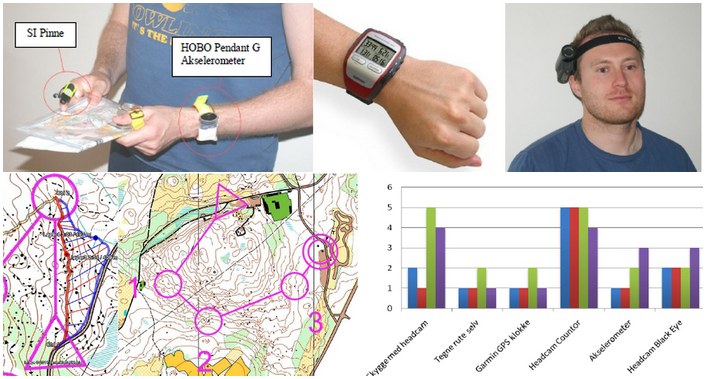Interesting study: Evaluation of tools for o-technical analysis

- Which feedback can you get from different tools for o-technical analysis, and how useful are they for trainers and runners? This was the question asked in a scientific study performed by Hans Jørgen Kvåle and Kim André Sveen in a study they did as part of the course “Pedagogics with Sport focus” at the Dalarne high school this spring. Hans Jørgen Kvåle is one of the best Norwegian ski-orienteers.
The study is quite extensive – resulting in a 77-page report – including all the background material. Unfortunately for international readers the report is in Norwegian language. If you understand Norwegian, it is well worth a read, though.
Evaluation methods
The study looks at several different evaluation methods,
- Split time analysis
- Drawing your own route on the map after the training/competition
- Analyzing GPS-track
- Headcam-video worn by the runner (analyzed along with GPS-track)
- Headcam-video by somebody running behind the runner (analyzed along with GPS-track)
- Mapreading analysis with automatic mapreading device (accelerometer) – also called AMRD
The report concludes that the use of headcam-video synchronized with GPS-track was the most useful for o-technical analysis. 3DRerun was used for the headcam-synchronization in the study. The report also concluded that it is important to always draw your route after the training/competition as the first part of the analysis. The automatic mapreading detection is evaluated as very promising, but there were some problems with accuracy of the method in the study (this might be due to how the equipment was used).
You find the report in the “Overview articles” section of o-training.net – along with among other Thierry Gueorgiou’s “Full speed – no mistake”, Martin Lerjen’s “Analyzing your mapreading” and Ultimate Orienteering’s report from the International Coach Conference 2009:
Note! The author of this article (Jan Kocbach) contributed to the study as a representative for the Norwegian Orienteering Federation by reading the report and giving comments and tips on the procedure used.